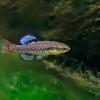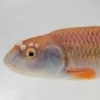I have Leptolucania ommata and Bluefin Killifish in a 29g heavily heavily planted tank.
I had scuds established but the Bluefin demolished them in a matter of days. There are some ramshorn snails, a BN Pleco, and now a pair of Threadfin Rainbows.
I feed scuds, frozen bloodworms, and frozen brine shrimp to the ravenous fat cow Bluefins. LOL
I feed microworms to the high maintenance Threadfins.
The Lepto keep hidden, are shy, barely come out even when everyone else is eating....they are all alive and I don't seem to have lost any but I have NO idea what they eat.
Should I be concerned?










